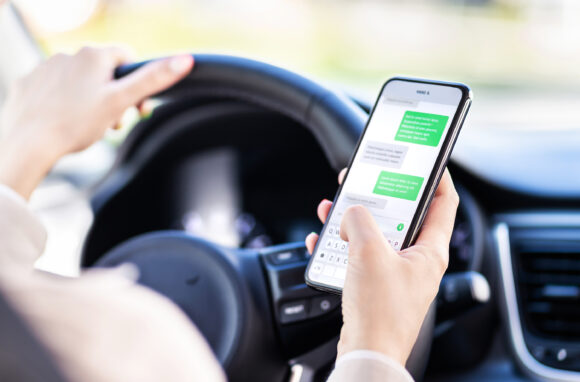US motorists have eased their feet off their gas pedals a bit since the height of the pandemic, but their eyes are on the road a lot less, according to a new report by Cambridge Mobile Telematics.
The company, which provides technology for usage-based auto insurance programs, said that in February motorists spent an average of 1 minute and 38 seconds distracted for each hour of driving. That’s a 30% increase since February 2020, the last month before the COVID-19 pandemic prompted widespread lockdowns.
What’s more, the pattern of distracted driving — which before increased in the spring and summer and waned in the fall and winter — is now persisting year round, the report says. While distracted driving dropped by about 10 percent from October through March in 2019 and 2020, the decrease was only 0.6% in 2021.
“Over the past two years, distracted driving has been like a pandemic within a pandemic, increasing at alarming rates and changing drivers’ behaviors as the pandemic wears on,” stated Ryan McMahon, vice president of strategy for CMT. “As more drivers hit the nation’s roads, this intensified distraction will put even more people at risk.”
According to the National Highway Transportation Safety Administration, distracted driving led to 3,142 traffic deaths in 2019, the latest figures available. A 2018 national observational study found that 3.2% of drivers stopped at intersections were talking on hand-held phones at the time, according the the Insurance Institute for Highway Safety.
CMT and other technology companies reported last year that driving patterns were disrupted during the pandemic, with empty roads leading to an increase in speeding and other risky behaviors. CMT reported that the number of driving trips dropped 60% as of April 15, 2020, while speeding jumped by 64% and cell phone distraction risk increased by 18.5%.
By September 2021, driving patterns returned nearly to pre-pandemic levels. The number of trips was 0.9% below September 2019. The number of trips in October 2021 was 0.3% below October 2019.
The arrival of the Omnicron variant decreased traffic loads again, with a 9.1% drop in trips in January 2022 compared the prior year. By February, however, the number of trips was 4.3% less than the 2019 level.
More cars on the road caused drivers to slow down, but not much. The amount of time speeding per hour was two minutes and 28 seconds per hour in April 2020, a 24.9% increase over the year before, the CMT report says. By January 2022, the time spent speeding had dropped to two minutes and 22 seconds, which was 19.7% more than in January 2020.
Nighttime driving saw the largest peak in distracted driving. Before the pandemic in February 2020, drivers who started trips during the hours between 6 p.m. and 11 p.m. were distracted for one minute and 26 seconds per hour. That jumped to one hour and 56 seconds in April 2020 and has remained nearly as high since then.
The report was released to coincide with Distracted Driver Awareness Month, designated by a Congressional resolution in 2010. The report can be downloaded by request here.
Was this article valuable?
Here are more articles you may enjoy.


 Waymo to Update Software Across Fleet After Major Power Failure
Waymo to Update Software Across Fleet After Major Power Failure  Twice Injured Firefighter Loses Second Workers’ Compensation Claim
Twice Injured Firefighter Loses Second Workers’ Compensation Claim  Tesla Drivers Are Buying Escape Tools and Cars to Avoid Getting Trapped Inside
Tesla Drivers Are Buying Escape Tools and Cars to Avoid Getting Trapped Inside  Trump Sues BBC for $10 Billion Over Documentary Edit
Trump Sues BBC for $10 Billion Over Documentary Edit 